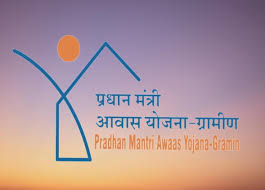Celebrating Awaas Diwas 2024: 8th Anniversary of Pradhan Mantri Awas Yojana – Gramin (PMAY-G) (GS Paper 2, Government Policies)

In the News
- On November 20, 2024, the Ministry of Rural Development commemorated Awaas Diwas 2024, marking the 8th anniversary of the Pradhan Mantri Awas Yojana – Gramin (PMAY-G), a flagship initiative launched by Prime Minister Narendra Modi in Agra, Uttar Pradesh on November 20, 2016.
- This initiative aims to achieve the vision of “Housing for All,” transforming rural housing in India.
Vision and Key Objectives of PMAY-G
The Pradhan Mantri Awas Yojana – Gramin (PMAY-G) is designed to provide pucca houses to households without proper housing and those living in dilapidated or kutcha homes. This mission is part of India's broader goal to promote inclusive growth and rural development, ensuring access to basic amenities for all.
- Target and Scope: Originally, the scheme aimed to complete 2.95 crore houses by 2023-24, but the scope was later extended to construct an additional 2 crore houses by March 2029, increasing the total outlay to ₹3,06,137 crore.
- 2024-25 Allocation: ₹54,500 crore has been allocated for the fiscal year 2024-25.
Key Features and Beneficiary Inclusivity
Identification and Inclusivity
The government focuses on transparency and inclusivity in selecting beneficiaries:
-
- Beneficiaries are identified through SECC 2011 and Awaas+ 2018 surveys, with data verified at the Gram Sabha level.
- The eligibility criteria were revised to make the scheme more inclusive, with the income threshold raised to ₹15,000 per month. Additionally, exclusion conditions were reduced from 13 to 10.
Special Focus on Marginalized Communities
-
- 60% of the houses are reserved for SC/ST households.
- 5% of houses are reserved for the differently-abled and families affected by natural disasters.
Empowering Women and Landless Families
-
- 74% of the houses are owned by women, either solely or jointly, with the goal of achieving 100% women ownership in the future.
- Over 2.88 lakh houses have been provided to landless families, with land allotted for housing.
Technological Advancements and Innovations
- Awaas+ 2024 Mobile App: This app ensures transparent beneficiary selection, integrates 3D house designs, and allows beneficiaries to choose designs that fit culturally and environmentally.
- Disaster-resilient Construction: Over 3 lakh rural masons have been trained in disaster-resilient construction techniques, ensuring the durability of homes.
Financial Assistance and Scheme Benefits
Assistance Amount:
-
- ₹1.20 lakh for plain areas.
- ₹1.30 lakh for North-Eastern and Hill States.
Direct Benefit Transfer (DBT):
- Ensures timely payments directly to beneficiaries.
- Over 10 lakh beneficiaries received the first installment via single-click payment during a ceremony in Bhubaneswar in 2024.
Convergence with Other Government Schemes
PMAY-G integrates with other flagship schemes to promote holistic rural development:
- MGNREGA: Provides employment for construction-related activities.
- SBM-G: Focuses on providing toilets.
- Jal Jeevan Mission: Ensures access to water supply.
- Surya Ghar Yojana: Promotes access to solar energy.
Focus on Tribal Communities
- DharatiAaba Tribal Village Utkarsh Abhiyan targets tribal communities in 63,843 villages, focusing on housing, social infrastructure, health, education, and livelihoods. Over 5 crore tribal people have benefited from this initiative.
Achievements Over the Decade
- Houses Completed:
- 59.58 lakh houses for SC households.
- 58.57 lakh houses for ST households.
- Saturation of Permanent Waiting Lists: Both the SECC 2011 and Awaas+ 2018 waiting lists are largely saturated, with remaining housing sanctions set to conclude by December 31, 2024.
Future Goals and Commitments
- By 2029, PMAY-G aims to fulfill its mission of “Housing for All”, ensuring the construction of stronger, safer, and inclusive rural communities.
- This comprehensive approach not only focuses on providing housing but also on empowering rural India and promoting social equity.
- The scheme remains central to the government's efforts to uplift marginalized communities, improve rural infrastructure, and foster disaster-resilient housing in India's villages.


